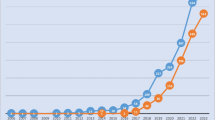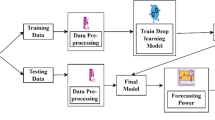Abstract
The solar photovoltaics (PV) energy resources have become more important with their significant contribution to the current power grid among renewable energy resources. However, the integration of the solar PV causes reliability issues in the power grid due to its high dependence on the weather condition. The predictability and stability of forecasting are critical for fully utilizing solar power. This study presents an Artificial Neural Network (ANN)-based solar PV power generation forecasting using a public dataset to form a basis experimental testbed to demonstrate analysis and impact of deceptive data attacks with adversarial machine learning. In addition, it evaluates the algorithms’ performance using the Root Mean Squared Error (RMSE), Mean Squared Error (MSE), and Mean Average Error (MAE) metrics for two main cases, i.e., with and without adversarial machine learning attacks. The results show that the ANN-based models are vulnerable to adversarial attacks.




Similar content being viewed by others
References
US. Department of Energy FE (2002) Using distributed energy resources-a how-to guide for federal energy managers. Cogener Compet Power J 17(4):37–68
U.S. Solar Market and 15 States See Best Quarter Ever for Residential Solar, https://www.seia.org/news/us-solar-market-and-15-states-see-best-quarter-ever-residential-solar. Retrieved: December 2021
Solar Market Insight Report 2019 Q4, http://www.seia.org/research-resources/solar-market-insight-report-2019-q4, Retrieved: September 2021
Solar Industry Research Data, https://www.seia.org/solar-industry-research-data, Retrieved: September 2021
Ahmed Razin et al (2020) A review and evaluation of the state-of-the-art in PV solar power forecasting: Techniques and optimization. Renew Sustain Energy Rev 124:109792
Bayindir R, Colak I, Fulli G, Demirtas K (2016) Smart grid technologies and applications. Renew Sustain Energy Rev 66:499–516
Kuzlu M, Sarp S, Pipattanasomporn M, Cali U (2020) Realizing the potential of blockchain technology in smart grid applications. In: 2020 IEEE power and energy society innovative smart grid technologies conference (ISGT), pp 1–5. IEEE
Cali U, Kuzlu M, Pipattanasomporn M, Kempf J, Bai L (2021) Applications of artificial intelligence in the energy domain. In: Digitalization of power markets and systems using energy informatics. Springer, Cham. https://doi.org/10.1007/978-3-030-83301-5_7
Onen A (2021) Role of artificial intelligence in smart grids. Electr Eng, pp 1–1
Sarp S, Kuzlu M, Cali U, Elma O, Guler O (2021) An interpretable solar photovoltaic power generation forecasting approach using an explainable artificial intelligence tool In: IEEE power and energy society innovative smart grid technologies conference (ISGT), pp 1–5, https://doi.org/10.1109/ISGT49243.2021.9372263
Wang Huaizhi et al (2020) Taxonomy research of artificial intelligence for deterministic solar power forecasting. Energy Convers Manage 214:112909
Radian B (2013) Artificial intelligence techniques for solar energy and photovoltaic applications. Handbook of Research on Solar Energy Systems and Technologies. IGI Global, pp 376–436
Mandal Paras et al (2012) Forecasting power output of solar photovoltaic system using wavelet transform and artificial intelligence techniques. Proc Comput Sci 12:332–337
Kuo Ping-Huan, Huang Chiou-Jye (2018) A green energy application in energy management systems by an artificial intelligence-based solar radiation forecasting model. Energies 11(4):819
Dong N, Chang JF, Wu AG, Gao ZK (2020) A novel convolutional neural network framework based solar irradiance prediction method. Int J Electr Power Energy Syst 114:105411
Zhang J, Chi Y, Xiao L (2018) Solar power generation forecast based on LSTM, In: 2018 IEEE 9th international conference on software engineering and service science (ICSESS), Beijing, China, pp 869–872
Isaksson E, Karpe Conde M (2018) Solar power forecasting with machine learning techniques
Mellit Adel et al (2020) Advanced methods for photovoltaic output power forecasting: a review. Appl Sci 10(2):487
Kou J, et al (2013) Photovoltaic power forecasting based on artificial neural network and meteorological data, In: 2013 IEEE international conference of IEEE region 10 (TENCON 2013), Xi’an, pp 1–4
Liu D, Sun K (2019) Random forest solar power forecast based on classification optimization. Energy 187:115940
Alfadda A, Adhikari R, Kuzlu M, Rahman S (2017) Hour-ahead solar PV power forecasting using SVR based approach. In: 2017 IEEE power and energy society innovative smart grid technologies conference (ISGT), Washington, DC, pp 1–5
Sharifzadeh Mahdi, Sikinioti-Lock Alexandra, Shah Nilay (2019) Machine-learning methods for integrated renewable power generation: A comparative study of artificial neural networks, support vector regression, and Gaussian Process Regression. Renew Sustain Energy Rev 108:513–538
Yuan X, He P, Zhu Q, Li X (2019) Adversarial examples: attacks and defenses for deep learning. IEEE Trans Neural Netw Learn Syst 30(9):2805–2824
Santana EJ, Silva RP, Zarpelão BB, Junior SB (2020) Photovoltaic generation forecast: model training and adversarial attack aspects. In: Brazilian conference on intelligent systems 2020 Oct 20, pp 634–649. Springer, Cham
Santana EJ, Silva RP, Zarpelão BB, Barbon Junior S (2021) Detecting and mitigating adversarial examples in regression tasks: a photovoltaic power generation forecasting case study. Information 12(10):394
Luo J, Hong T, Fang S (2018) Benchmarking robustness of load forecasting models under data integrity attacks. Int J Forecast 34(1):89–104
Chen Y, Tan Y, Zhang B (2019, June) Exploiting vulnerabilities of load forecasting through adversarial attacks. In: Proceedings of the tenth ACM international conference on future energy systems, pp 1–11
Tang N, Mao S, Nelms RM (2021) Adversarial attacks to solar power forecast. In: Proceedings of the IEEE GLOBECOM
Sarp S, Kuzlu M, Cali U, Elma O, Guler O (2021) Analysis of false data injection impact on AI based solar photovoltaic power generation forecasting. arXiv preprint arXiv:2110.09948
Tuna OF, Catak FO, Eskil T (2021) Exploiting epistemic uncertainty of the deep learning models to generate adversarial samples. arXiv preprint arXiv:2102.04150
Unsal DB, Ustun TS, Hussain SM, Onen A (2021) Enhancing cybersecurity in smart grids: false data injection and its mitigation. Energies 14(9):2657
Aladag M, Catak FO, Gul E (2019) Preventing data poisoning attacks by using generative models, In: International informatics and software engineering conference (UBMYK), pp 1–5, https://doi.org/10.1109/UBMYK48245.2019.8965459
Kurakin A, Goodfellow I, Bengio S (2016) Adversarial machine learning at scale. arXiv preprint arXiv:1611.01236
Rosenberg I, Shabtai A, Elovici Y, Rokach L (2021) Adversarial machine learning attacks and defense methods in the cyber security domain. ACM Comput Surv (CSUR) 54(5):1–36
Catak FO, Kuzlu M, Catak E, Cali U, Unal D (2022) Security concerns on machine learning solutions for 6G networks in mmWave beam prediction. Phys Commun, p 101626
Cali U, Kuzlu M, Pipattanasomporn M, Kempf J, Bai L (2021) Foundations of big data, machine learning, and artificial intelligence and explainable artificial intelligence. In: Digitalization of power markets and systems using energy informatics. Springer, Cham. https://doi.org/10.1007/978-3-030-83301-5_6
Hong Tao, Pinson Pierre, Fan Shu, Zareipour Hamidreza, Troccoli Alberto, Hyndman Rob J (2016) Probabilistic energy forecasting: global energy forecasting competition 2014 and beyond. Int J Forecast 32(3):896–913
Goodfellow IJ, Shlens J, Szegedy C (2014) Explaining and harnessing adversarial examples. arXiv preprint arXiv:1412.6572
Acknowledgements
This work was supported in part by the Commonwealth Cyber Initiative, an investment in the advancement of cyber R &D, innovation, and workforce development in Virginia. For more information about CCI, visit cyberinitiative.org.
Author information
Authors and Affiliations
Corresponding author
Additional information
Publisher's Note
Springer Nature remains neutral with regard to jurisdictional claims in published maps and institutional affiliations.
Rights and permissions
About this article
Cite this article
Kuzlu, M., Sarp, S., Catak, F.O. et al. Analysis of deceptive data attacks with adversarial machine learning for solar photovoltaic power generation forecasting. Electr Eng 106, 1815–1823 (2024). https://doi.org/10.1007/s00202-022-01601-9
Received:
Accepted:
Published:
Issue Date:
DOI: https://doi.org/10.1007/s00202-022-01601-9




